 |
SINGLE ENTRY CALCULATION OF MISSING INFORMATION |
| << CONVERSION OF SINGLE ENTRY IN DOUBLE ENTRY ACCOUNTING SYSTEM |
| SINGLE ENTRY CALCULATION OF MARKUP AND MARGIN >> |
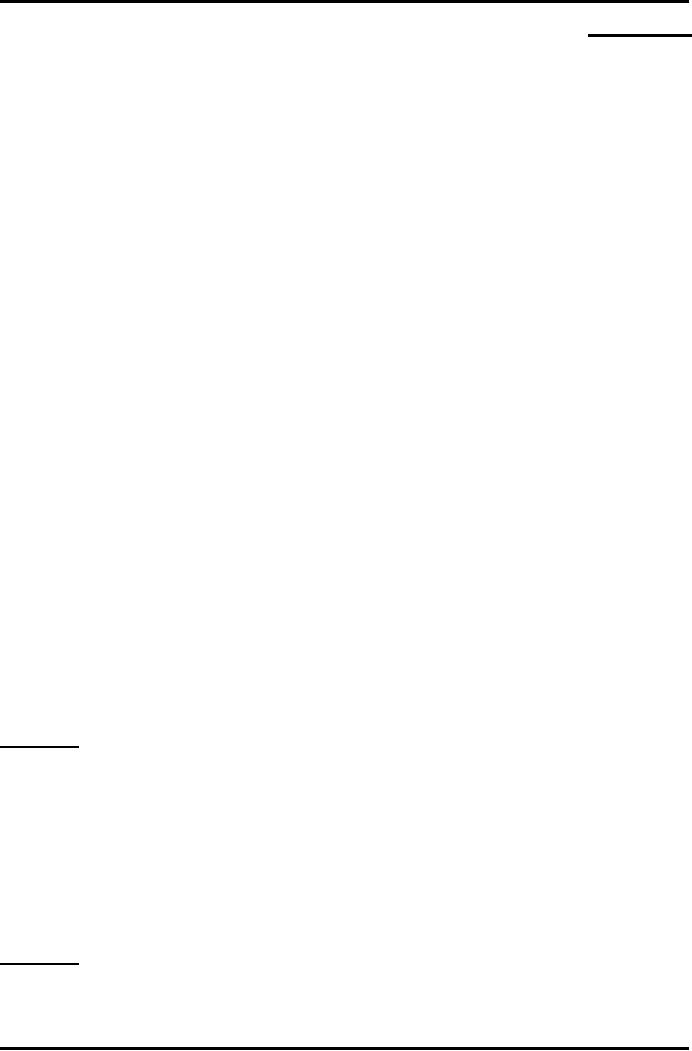
Advance
Financial Accounting
(FIN-611)
VU
LESSON
# 4
SINGLE
ENTRY
CALCULATION
OF MISSING INFORMATION
As we
have already learned that a
medium sized entity will not be preparing
its books
of
accounts based on double entry
book keeping system rather
it will be maintaining
following
set of records in order to
prepare its financial
statements:
a)
Cash
Book
i.
Cash Account
ii.
Bank Account
b)
Debtors
(Accounts Receivables)
Ledger
c)
Creditors
(Accounts Payables)
Ledger
d)
Statement
of Affairs (Opening)
e)
Year-end
adjustments
i.
Closing stock
ii.
Depreciation of fixed assets
iii.
Provision for doubtful debts
iv.
Accruals and prepayments
v.
Disposal of Assets
Above
information provides sufficient
data which is required to prepare
Income
Statement
and Balance Sheet of the
entity.
For
students the question
becomes more complex when
the above set of records is
not
completely
prepared and some information is
missing from these records. In
this case
the
students have to put expertise in
searching out the missing
information firstly and
then to
prepare financial
statements.
Possible
missing information and the
procedure to ascertain that
information is being
discussed
hereunder:
Sales
Sales may be of
two types (i) Credit Sales, and
(ii) Cash Sales. Credit Sales will
be
ascertained
by preparing Debtors Account while
Cash Sales will be found out from
the
Cash
Book.
Question:
From
the following information, find
out the credit
sales:
Rupees
Opening
balance of Debtors
12,000
Returns
Inward
5,000
Cash
received from
debtors
45,000
Discount
allowed
3,000
Bad
Debts
1,500
Closing
balance of Debtors
10,000
Question:
From
the following cash transactions ascertain
the amount of cash
sales:
Rupees
Opening
Cash balance
5,000
Opening
Bank balance
10,000
14
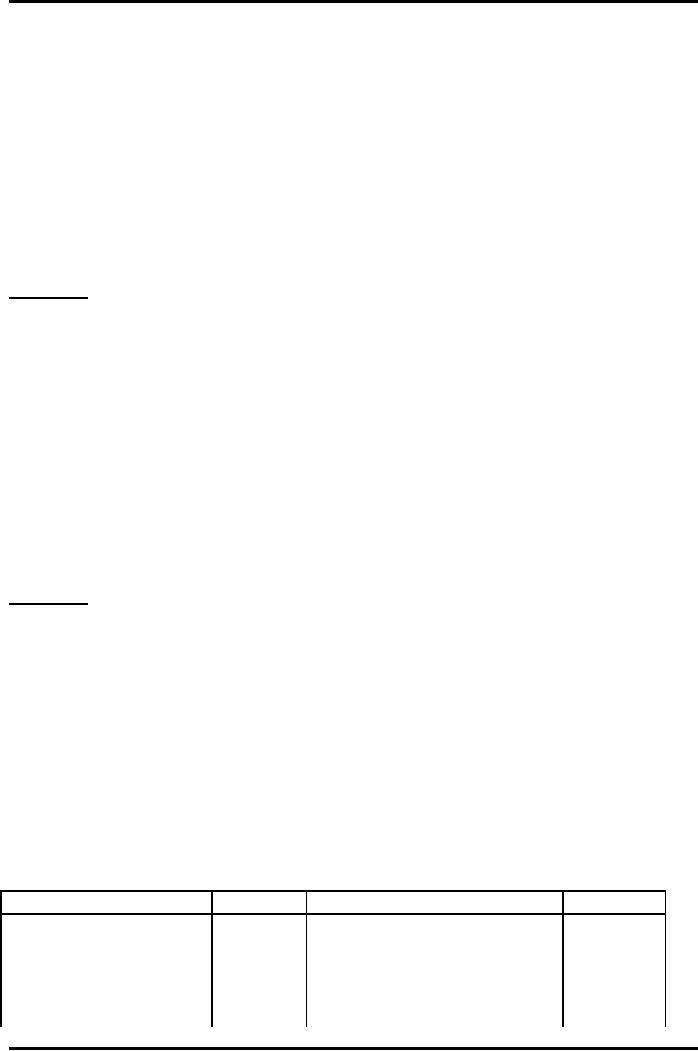
Advance
Financial Accounting
(FIN-611)
VU
Cash
collected from
Debtors
20,000
Commission
received
5,000
Payment
to Creditors
10,000
Cash
purchases
20,000
Closing
Cash balance
10,000
Closing
Bank balance
15,000
Purchases
The
purchases may also be of two types
(i) Credit Purchases and
(ii) Cash Purchases.
Credit
Purchases will be ascertained by
preparing Creditors Account while
Cash
Purchases
will be appearing in the Cash
Book.
Question:
From
the following information, find
out the Credit
purchases:
Rupees
Opening
Creditors
7,600
Cash
paid to Creditors
20,000
Discount
received
500
Returns
outward
2,400
Closing
Creditors
9,500
Stocks/Inventory
Opening
stock appears in the
Statement of Affairs and Closing
stock is an item
given
in
the year end adjustments.
Some times these information
are hidden in this case
the
stock
balances will be ascertained through the
equation of cost of goods
sold i.e.
Opening
Stock + Purchases Closing
Stock = Cost of Goods
Sold
Question:
From
the following information, calculate opening
stock:
Rupees
Purchases
20,000
Sales
30,000
Closing
Stocks
10,000
Gross
profit
20%
of Sales
Drawings
Some
times cash drawings are
missing, this information
appears in payments side
of
the
cash book. Cash book is
prepared to ascertain drawings as a
balancing figure in
the
credit
side.
Information
in Cash Book
Receipts
Rupees
Payments
Rupees
Opening
Balance b/f
Cash
purchases
Cash
Sales
Paid
to creditors
Received
from debtors
Operating
expenses
Other
incomes
Purchase
of assets
Fresh
capital
Repayment
of loan
15
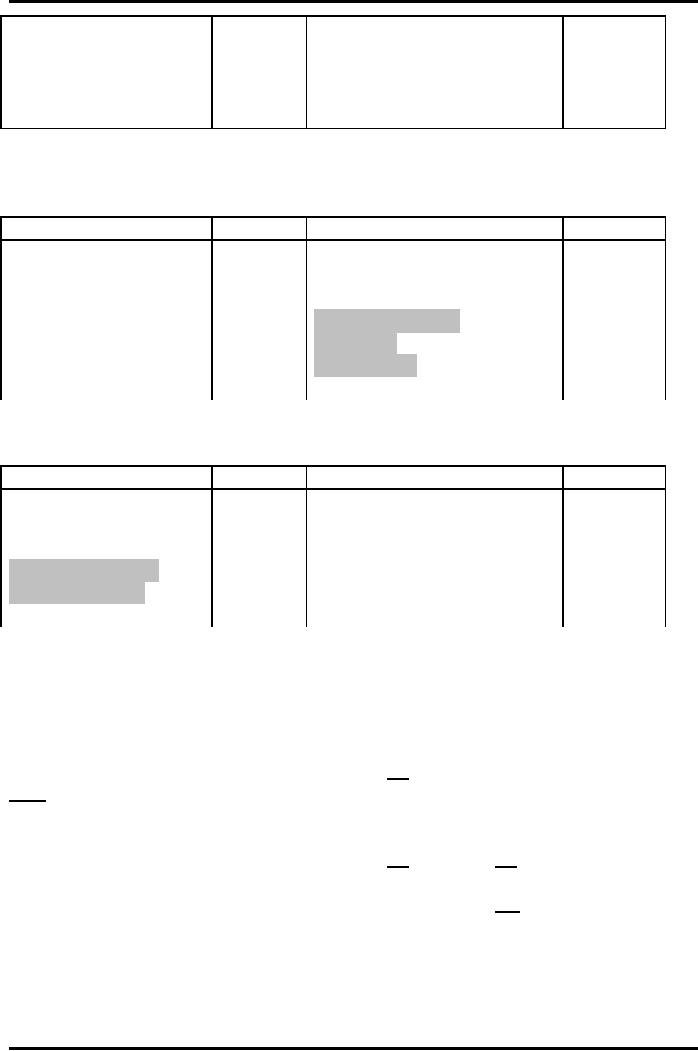
Advance
Financial Accounting
(FIN-611)
VU
Loan
taken
Drawings
Sales
proceeds of assets
Investments
Fixed
deposits
Closing
balance c/f
Information
in Debtors Account
Debit
Rupees
Credit
Rupees
Opening
Balance b/f
Cash
received from debtors
Credit
Sales
Cheques
received form
debtors
Discount
Allowed
Bad
Debts
Sales
returns
Closing
Balance c/f
Information
in Creditors Account
Debit
Rupees
Credit
Rupees
Cash
paid to creditors
Opening
Balance b/f
Cheques
paid to
Credit
Purchases
creditors
Discount
Received
Purchase
returns
Closing
Balance c/f
Information
in Statement of Affairs
(Opening)
Rs.
Rs.
All
Assets
Fixed
Assets
***
Investments
***
***
Current
Assets
***
Less
All
Liabilities
Loans
***
***
Current
Liabilities
***
Owner's
Equity.
***
Practice
Questions
Q.1
Ehsan
ul Haq has kept records of
his business transactions in a
single entry form, but
he did not
realize that he had to record
cash
drawings. His
bank account for the
year
20◊8
is as follows:
16
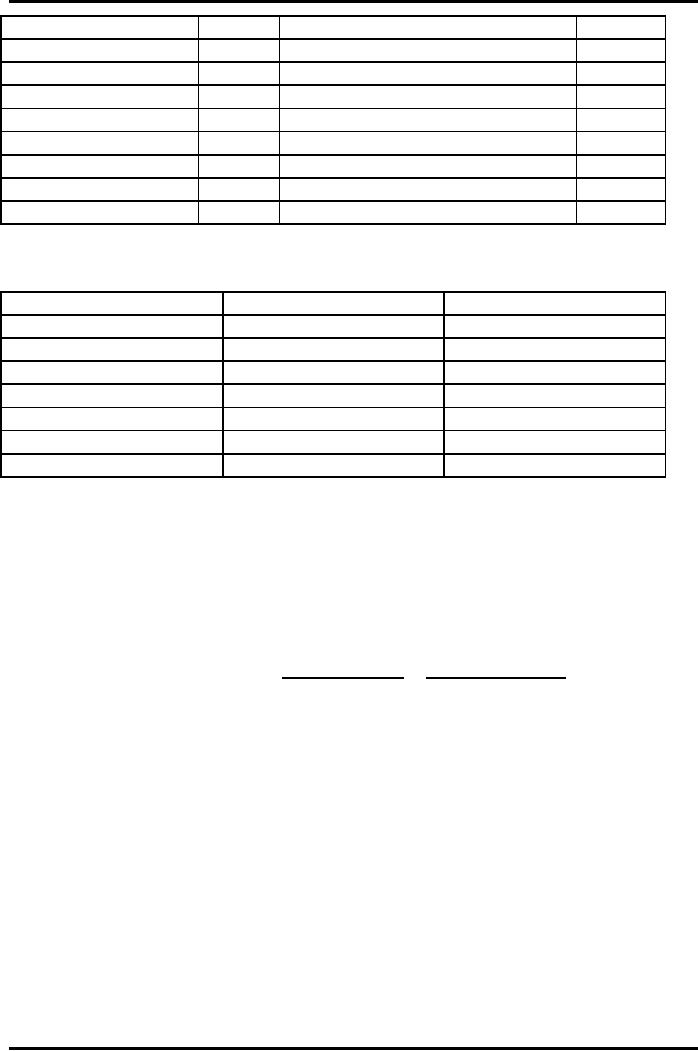
Advance
Financial Accounting
(FIN-611)
VU
Rs
Rs
Balance
1.1.2008
1,890
Cash
withdrawn from bank
5,400
Receipts
from debtors
44,656
Trade
Creditors
31,695
Loan
from T Hughes
2,000
Rent
2,750
Rates
1,316
Drawings
3,095
Sundry
Expenses
1,642
Balance
31.12.2008
2,648
48,546
48,546
Records
of cash paid were: Sundry
expenses Rs. 122; Trade
creditors Rs. 642.
Cash
sales
amounted to Rs. 698. The
following information is also
available:
Rs
Rs
Cash
in Hand
Trade
Creditors
48
93
Debtors
4,896
5,091
Rent
Owing
6,013
7,132
Rates
in Advance
-
250
Van
(at valuation)
282
312
Stock
2,800
2,400
11,163
13,021
You
are to draw up a trading and profit and
loss account for the year
ended 31
December
20◊8 and a balance sheet as at
that date. Show all of your
workings.
Q2.
Following
is the position of assets and liabilities
of MR. A who keeps his book
by
single
entry system:
January
01
December
31
2006
2006
Debtors
5,300
8,800
Creditors
1,500
1,950
Stock
1,700
1,900
Fixed
assets
2,140
1,740
Following
are other details:
Rs.
Total
sales (including cash sales
Rs. 500)
10,000
Total
purchases (including cash
purchases Rs.
4,500
2,050)
1,000
General
expenses of business
Drawings
300
Cash
in hand and at bank
410
Payment
for fixed assets
500
17
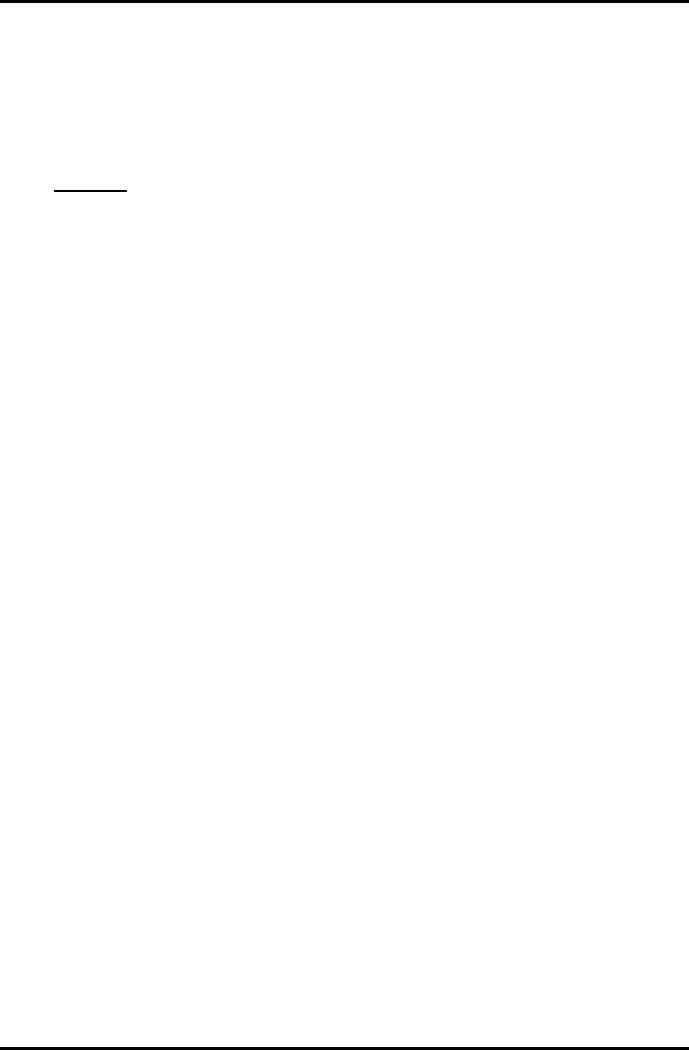
Advance
Financial Accounting
(FIN-611)
VU
Stock
of Rs. 500 was used by the
proprietor for his personal
use and material of Rs.
50
was
used for constructing a part of
plant. A how interest on capital at 5%
p.a.
You
are required to
prepare:
a.
Trading and profit and loss
account for the year ending
December 31, 2006,
and
b.
Balance sheet as on December
31, 2006.
Answers
(Capital
in the beginning Rs. 7,000,
Gross Profit Rs. 6,250,
Net Profit Rs.
3,930,
Balance
Sheet total Rs.
12,850).
18
Table of Contents:
- ACCOUNTING FOR INCOMPLETE RECORDS
- PRACTICING ACCOUNTING FOR INCOMPLETE RECORDS
- CONVERSION OF SINGLE ENTRY IN DOUBLE ENTRY ACCOUNTING SYSTEM
- SINGLE ENTRY CALCULATION OF MISSING INFORMATION
- SINGLE ENTRY CALCULATION OF MARKUP AND MARGIN
- ACCOUNTING SYSTEM IN NON-PROFIT ORGANIZATIONS
- NON-PROFIT ORGANIZATIONS
- PREPARATION OF FINANCIAL STATEMENTS OF NON-PROFIT ORGANIZATIONS FROM INCOMPLETE RECORDS
- DEPARTMENTAL ACCOUNTS 1
- DEPARTMENTAL ACCOUNTS 2
- BRANCH ACCOUNTING SYSTEMS
- BRANCH ACCOUNTING
- BRANCH ACCOUNTING - STOCK AND DEBTOR SYSTEM
- STOCK AND DEBTORS SYSTEM
- INDEPENDENT BRANCH
- BRANCH ACCOUNTING 1
- BRANCH ACCOUNTING 2
- ESSENTIALS OF PARTNERSHIP
- Partnership Accounts Changes in partnership firm
- COMPANY ACCOUNTS 1
- COMPANY ACCOUNTS 2
- Problems Solving
- COMPANY ACCOUNTS
- RETURNS ON FINANCIAL SOURCES
- IASBíS FRAMEWORK
- ELEMENTS OF FINANCIAL STATEMENTS
- EVENTS AFTER THE BALANCE SHEET DATE
- PROVISIONS, CONTINGENT LIABILITIES AND CONTINGENT ASSETS
- ACCOUNTING POLICIES, CHANGES IN ACCOUNTING ESTIMATES AND ERRORS 1
- ACCOUNTING POLICIES, CHANGES IN ACCOUNTING ESTIMATES AND ERRORS 2
- BORROWING COST
- EXCESS OF THE CARRYING AMOUNT OF THE QUALIFYING ASSET OVER RECOVERABLE AMOUNT
- EARNINGS PER SHARE
- Earnings per Share
- DILUTED EARNINGS PER SHARE
- GROUP ACCOUNTS
- Pre-acquisition Reserves
- GROUP ACCOUNTS: Minority Interest
- GROUP ACCOUNTS: Inter Company Trading (P to S)
- GROUP ACCOUNTS: Fair Value Adjustments
- GROUP ACCOUNTS: Pre-acquistion Profits, Dividends
- GROUP ACCOUNTS: Profit & Loss
- GROUP ACCOUNTS: Minority Interest, Inter Co.
- GROUP ACCOUNTS: Inter Co. Trading (when there is unrealized profit)
- Comprehensive Workings in Group Accounts Consolidated Balance Sheet